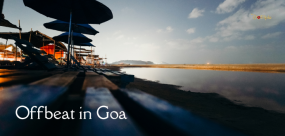Nestled within the proximity of the Nanda Devi Biosphere Reserve, the Valley of Flowers Trek unfolds as a Himalayan gem adorned with an abundance of vibrant blossoms that stretch across its vast expanse, rendering it one of India's most enchanting treks.
Encompassing an area of 87.5 square kilometers and rising to an elevation of 14,200 feet, the Valley of Flowers Trek appeals to trekkers of all backgrounds. Its captivating biodiversity draws nature enthusiasts, while the challenging ascents and descents offer a thrilling Himalayan experience, often crossing off a bucket-list item for adventurers. Additionally, the trek leads to Hemkund Sahib, a significant pilgrimage site.
This ancient trek gained global recognition when UNESCO declared it a World Heritage Site in 2002. The Valley boasts over 520 species of flowers, creating a breathtaking tapestry of colors dominated by hues of pink, blue, and purple. Located in Uttarakhand's Chamoli district, this national park is not only a haven for diverse flora but also shelters endangered animals like snow leopards and red foxes.
Situated at an approximate altitude of 12,000 feet, the Valley of Flowers National Park, in conjunction with the Nanda Devi National Park, forms a transitional zone bridging the mighty Himalayas and the Zanskar mountain range.
Graded as an easy to moderate trek, the Valley of Flowers appeals to beginners and families alike. The most challenging part is the ascent to Hemkund Sahib Gurudwara, the world's highest Gurudwara and a prominent site in Uttarakhand.
The valley itself spans nearly 10 kilometers, presenting a kaleidoscope of colors in the form of blooming flowers that beckon trekkers to pause and admire. The fragrance of flora permeates the air as you navigate the narrow paths meandering through the flower beds.
Our journey begins with an 8-hour drive from Rishikesh to Joshimath, the base camp for the Valley of Flowers trek. Despite the strenuous drive, the breathtaking scenery includes views of four of the Panch Prayag, the holy confluence sites of the Ganga River—Devprayag, Rudraprayag, Karnaprayag, and Nand Prayag—providing a visual treat.
The following day, we drive to Pulna village, the trek's starting point. From there, we embark on a gradual 9-kilometer ascent along the Pushpawati river. This section of the trek falls within the easy to moderate category, featuring stone-carved paths and challenging uphill stretches. Ghangaria village, our next campsite at 10,000 feet, offers numerous small dhabas for refreshments.
After covering a 4-kilometer stretch, trekkers encounter the Laxman waterfall, a refreshing sight. Beyond the forest check post, a wooden bridge over the Pushpavati river marks the entrance to the valley. The landscape transforms into a natural paradise, with a riot of colorful flowers spread across the ground, making the trek easier as you traverse flat terrain.
The valley adorns the Himalayan peaks with native flowers like poppies, Himalayan roses, and geraniums. The flowery carpet eventually gives way to a glacier after a 5-kilometer stretch, but the majestic views of Nilgiri Parvat, Bhyundar Khal, Rattan, Gauri Parvat, and a cold stream of water flowing enhance the picturesque scenery. Camping and eating within the valley are prohibited, so trekkers return to Ghangaria for the night.
The most challenging part of the trek begins the next day as we head to Gurudwara Hemkund Sahib, situated at an altitude of 14,107 feet, making it the world's highest Gurudwara. The six-hour ascent from Ghangaria to Hemkund Sahib involves a rapid gain in altitude, steep descents, and cascading waterfalls. Trekkers must stay hydrated due to the lower oxygen levels. The reward at the end is Hemkund Lake, reflecting the grandeur of the surrounding mountains, where you can savor hot chai and khichdi served during Langar.
Strolling around the Gurudwara, you'll find a sense of peace unlike anywhere else. The lake, formed by melting glaciers from Hathi Parvat and Saptarishi peaks, mirrors the mountains' magnificence. On clear days, you can catch glimpses of Nilgiri Parvat, Bhyundar Khal, and Gauri Parvat. A temple dedicated to Laxman, Lord Rama's brother, is also nearby for paying respects. The 7-kilometer descent back to Ghangaria can be strenuous on the muscles.
The following day brings relative ease as the descent to Pulna village feels more manageable than the steep uphill climb of the previous day. The trail offers ample dhabas and snack shops, facilitating the descent, and soon you'll reach the base for the return drive to Joshimath, concluding your Valley of Flowers trek.
This renowned trek in the Indian Himalayas is considered safe, featuring well-marked trails often frequented by pilgrims. However, caution is advised on slippery sections, particularly during the rainy season.
The best time to experience the Valley of Flowers trek is in July and August when the flowers are in full bloom. Among the prominent flower species, nature enthusiasts can spot Brahmakamal, Blue Poppy, Cobra Lily, Anemone, Geranium, Marsh Marigold, and Primula. Besides the vibrant flowers, the valley offers waterfalls, glaciers, towering mountains, rushing rivers, quaint villages, and an abundance of serenity.
